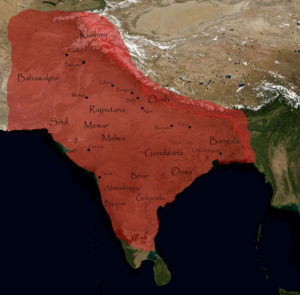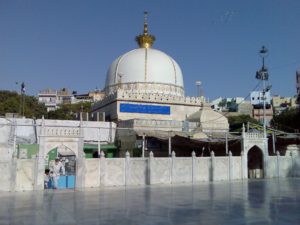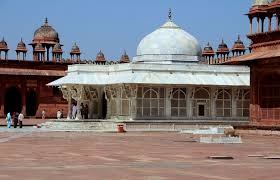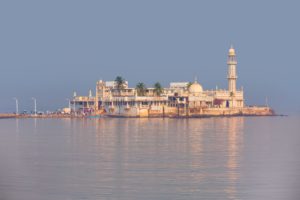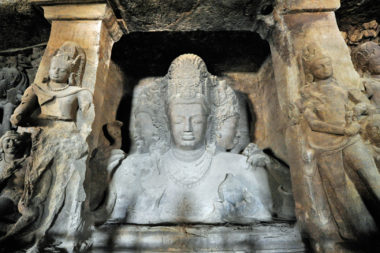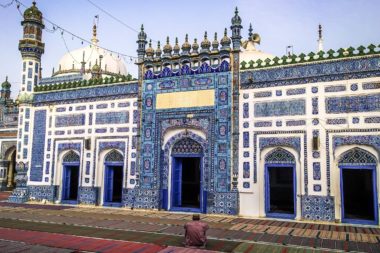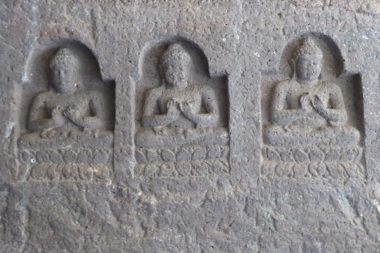The Indian constitution takes pride in the secular identity of this multicultural country. Beginning from the ancient Indus valley civilization, India has gone through the reign of many rulers. The earlier existence of several empires has also contributed to the cultural diversity of India. Renowned Indian author Sashi Tharoor has described India as a “Thali” or a collection of delicious dishes in different bowls. According to his idea of India, the presence of different religions and cultures has given this country a unique position in the world.
The advent of the Sultanate in the middle ages marks the journey of India’s Islamic culture. Due to almost 600 years of Islamic rule, India has been offered masterpieces of Islamic architecture, delicious Mughlai cuisine, soulful Sufi and Qawwali songs, romantic Urdu poetry, and many more beautiful elements to cherish. Most of the famous Muslim or Islamic shrines are dedicated to the Sufi saints who spread the message of pure love and divine faith through their soulful songs. After the birth of Sufism in the 11th century, the idea soon spread to the rest of India. More and more people in South Asia were attracted to Islam due to the divine brotherhood expressed through the ideas of Sufism.
India has always been considered as a religiously tolerant country where people belonging to different religions live in harmony. Though political influence has sometimes stimulated communal violence, India has never left behind its secular identity. So, let us take a glimpse of the 5 most famous Muslim shrines in India.
Ajmer Sharif in Rajasthan – The Dargah or Sufi shrine in Rajasthan’s Ajmer is one of the most renowned Muslim Shrines in India that welcomes thousands of devotees every year from different religious groups. The shrine is the resting place of noble Sufi saint Khwaja Moin-Ud-Din Chisti. The holy place has contributed to the expansion of Islam’s spiritual and moral values among the common people. Khwaja Moin-Ud-Din is not only a religious figure but also an epitome of humanism. He dedicated his entire life to serving the poor and neglected people of society. He is also known as Garib Nawaz. Having been built by Mughal Emperor Humayun, the shrine is a glorious instance of Mughal architecture. There are three primary parts of the Dargah complex such as tombs, Daalaans, and Courtyards. Renowned structures like Buland Darwaza, Nizam Gate, Jama Masjid, Dargah Shrine, Aulia Masjid, and Mehfil Khana are located inside the Dargah complex.
Hazrat Nizamuddin Dargah in Delhi – Having been built in the memory of the globally renowned Sufi saint, Nizamuddin Chisti, the Dargah of Hazrat Nizamuddin is located in the Indian capital of Delhi. Being constructed in 1526, the Dargah still carries the traditional values of Sufism and welcomes people from all religions with equal warmth. The Dargah’s sublime ambiance will fill your heart with peace. On every Sunday and Thursday, Langar or free community kitchen is arranged to serve vegetarian dishes for the devotees. Sessions of ethereal Sufi and Qawwali songs are organized on the evenings of Thursdays and Saturdays. You can come here in the evenings to cherish the divine mood of the place. Besides Nizamuddin Chisti, noble Muslim people like Jahan Ara Begum, Inayat Khan, and Urdu poet Amir Khusro are also buried inside this sacred Dargah complex.
Sheikh Salim Chisti Dargah in Fatehpur Sikri – The Dargah of Sheikh Salim Ali Chisti in the royal Fatepur Sikri complex is also another beautiful instance of Mughal architecture. Mughal Emperor Akbar constructed the Dargah in the memory of the Sufi Saint Sheikh Salim Ali Chisti whom he met before the birth of Jehangir. Salim Chisti predicted the birth of a male heir on the Mughal throne and therefore, Jehangir was also named after him as “Salim”. The tomb of Salim Ali Chisti is built with sterling white marble. Every year, many pilgrims come to pay their respect to this famous Sufi Saint. The Dargah has a wide courtyard where Qawwali sessions are arranged every Thursday. The soulful atmosphere of the place will definitely mesmerize every visitor.
Haji Ali Dargah in Mumbai – The Haji Ali Dargah in Mumbai is located on the beautiful background of the Arabian Sea. Despite being a wealthy merchant, Haji Ali left all the material possessions after his visit to Mecca and became a Sufi saint. A little islet on the southern coast of Mumbai is home to this famous Dargah. No matter what your religion is, this Dargah is an ideal place for spending some peaceful time. A causeway leads to the Dargah during the low tides whereas the Dargah is inaccessible in other times. Haji Ali’s glass-made tomb inside the Dargah complex is one of the greatest examples of Indo-Islamic architecture. The tomb remains covered with green and red brocade clothes. Surrounding the tomb, there is an ornamented silver frame with marble pillars. The hall of the Dargah also has splendid marble pillars with delicate mirror work. The ninety nine names of Allah (Name of God in Islam) are inscribed on these pillars in Arabic patterns. Following the Islamic traditions, the dargah has separate prayer rooms for men and women. A visit to this majestic seaside Dargah will not disappoint you.
The prominent presence of so many Muslim shrines indicates the influence of Islamic culture in Islamic culture in India and how it is an inseparable part of the Indian identity. So, if you are planning to visit India, make sure to include one of these Muslim shrines in your Wishlist.

